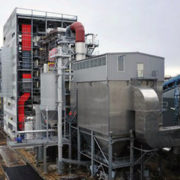Economics, Education, Finance sector development
 Industry and trade, Information and Communications Technology
Industry and trade, Information and Communications Technology
 Economics, Energy, Environment, Governance and public sector management, Infrastructure
Economics, Energy, Environment, Governance and public sector management, Infrastructure
 Gender, Health
Gender, Health
 Economics, Finance sector development, Industry and trade
Economics, Finance sector development, Industry and trade
 Economics, Finance sector development, Governance and public sector management
Economics, Finance sector development, Governance and public sector management
 Economics, Education, Finance sector development
Economics, Education, Finance sector development
 Economics, Finance sector development, Governance and public sector management
Economics, Finance sector development, Governance and public sector management
 Economics, Education, Governance and public sector management, Poverty
Economics, Education, Governance and public sector management, Poverty
 Economics, Finance sector development, Governance and public sector management
Economics, Finance sector development, Governance and public sector management

Asia’s financial connections with the rest of the world: Changing patterns

As economies in East Asia and the Pacific (EAP) have developed, they have also become important in international financial transactions, both as sources and destinations of cross-border bank lending, foreign direct investment (FDI), and portfolio investments. But, as we document in a new paper (Didier, Llovet, and Schmukler 2017), the composition of these financial connections has been changing in recent years on at least two fronts: (i) the partners with which EAP countries interact, and (ii) the type of financial transactions conducted.
Digital trade needs more coordination, leadership

Electronic documentation in trade has made impressive recent gains in Asia and the Pacific. Up to 38% of banks in the region report progress in digitizing their operations in 2015, and more than a third of countries had partially or fully implemented electronic customs systems by the end of last year.
Electrifying emerging ASEAN through off-grid distributed renewable energy systems

Some 134 million people in the Association of Southeast Asian Nations (ASEAN) region do not have access to electricity (IEA and ERIA, 2013). At the end of 2015, the ASEAN Community declared that the lack of power and energy access could threaten the region’s economic growth and its economic transition.
Economic impacts of obesity in the Republic of Korea

Obesity is a state of excessive body fat accumulation and is difficult to measure. Body mass index (BMI)—defined as weight in kilograms divided by the square of height in meters—has been used traditionally for its simplicity and the availability of data. Although shortcomings of using BMI have been acknowledged, its correlation with body fat percentage and its sensitivity in diagnosing obesity based on the body fat percentage have been verified for Korean people (Chung et al. 2016).
How does exchange rate volatility affect value added and gross trade?

The rise of Donald Trump has reignited the debate on the link between exchange rates and trade. The Trump administration has blamed the exchange rate policies of the People’s Republic of China (PRC), Japan, and Germany for the current account deficit in the United States (US), and the president’s Twitter posts have put many major currencies on a roller coaster ride. Now, policy makers around the globe are concerned about the negative impact of exchange rate volatility on world trade.
Escaping the middle income trap: Innovate or perish

The “middle income trap” captures the situation where a middle income country can no longer compete internationally in standardized, labor-intensive commodities because wages are relatively too high, and it can also not compete in higher value added activities on a broad enough scale because productivity is relatively too low. The result is slow growth, stagnant or falling wages, and a growing informal economy.
Hometown investment trust funds: A sustainable solution for financing green energy projects

The Fukushima Daiichi nuclear disaster was an energy accident at the Fukushima No. 1 Nuclear Power Plant in Fukushima, Japan, initiated primarily by the tsunami that followed the Tohoku earthquake on 11 March 2011 and led to a nuclear shutdown in the country. Japan substituted the loss of nuclear power with fossil fuels, such as oil, gas, and coal, and became more dependent on their imports and consumption.
Assessing the BOJ’s yield curve control policy

The Bank of Japan (BOJ) announced in September last year that it would be switching the focus of its quantitative easing program from monetary base targeting to controlling the shape of the yield curve (Bank of Japan, 2016). A brief comparison of the two frameworks is as follows. The previous monetary easing framework, Quantitative and Qualitative Monetary Easing (QQE) with a Negative Interest Rate, set out three policy dimensions: quantity, quality, and interest rates.
Why is Income Distributed Unequally? A Comparison of Japan and the United States

Japan and the United States (US) are at similar levels of economic development, yet their income distributions are considerably different. Whereas Japan has a relatively equal income distribution, the US is marked by a high level of income inequality. What are the sources of income inequality in both countries? Our latest research aims to uncover the sources on income inequality in both countries by exploiting detailed household panel survey.
Ultra-low interest rates and wandering overinvestment cycles in East Asia

In the 1960s, Kaname Akamatsu (1961) described the gradual relocation of industries from the advanced industrialized countries in East Asia to the less advanced countries during the latter’s economic catch-up process as the “flying geese” pattern. For instance, the textile industry was clustered in Japan in the 1950s but then successively relocated to the newly industrialized economies (Hong Kong, China; Taipei,China; Singapore; and the Republic of Korea), the new generation of tiger countries (Indonesia, Malaysia, the Philippines, and Thailand), the People’s Republic of China (PRC), and now increasingly to Viet Nam.


Search
Subscribe / Connect to Asia Pathways
Subjects
- Accelerating Progress in Gender Equality
- Addressing Remaining Poverty and Reducing Inequality
- Agriculture and natural resources
- Capacity development
- Climate change
- Economics
- Education
- Energy
- Environment
- Finance and Innovation
- Finance sector development
- Gender
- Globalization and Economic Stability
- Governance and public sector management
- Health
- Human Capital Development for Inclusive Growth and Shared Prosperity
- Industry and trade
- Information and Communications Technology
- Infrastructure
- Making Cities More Livable
- Miscellaneous
- Population
- Poverty
- Private sector development
- Regional cooperation and integration
- Sanitation
- Social development and protection
- Strengthening Governance and Institutional Capacity
- Subjects
- Transport
- Uncategorized
- Urban development
- Video Blog
- Water
Recent Posts
- The Promise and Perils of Mother Tongue-Based Education
- From Crisis to Resilience: The Evolution of the Banking Sector in Asia and the Pacific
- Tariffs on the Table: What Could Be Asia’s Next Move?
- Investing in Childcare a Win for Women and the Economy
- Flush and Flourish: Upgraded Toilets Can Transform Lives in Rural Asia




Recent Comments